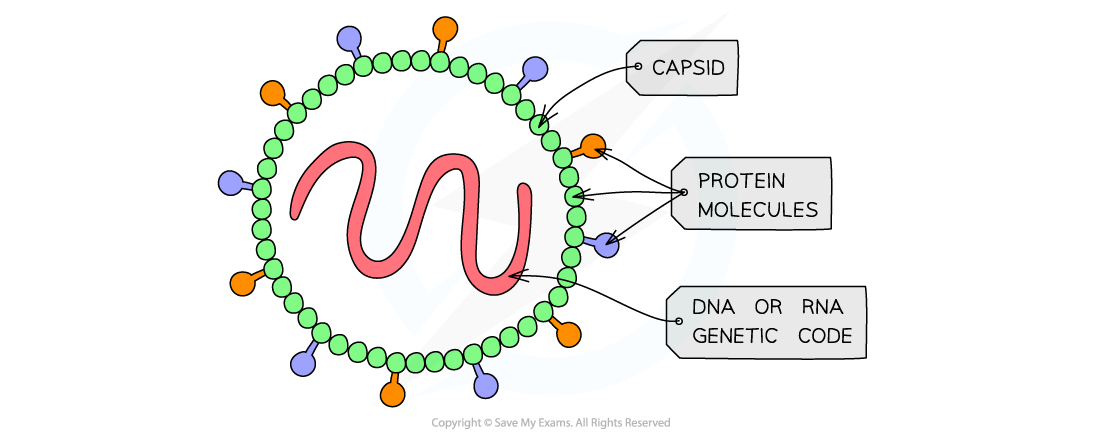Viruses (Cambridge (CIE) AS Biology): Revision Note
Exam code: 9700
Key features of viruses
Viruses are non-cellular particles that infect living cells
Note that viruses are not cells, and they are not considered to be living organisms, so are referred to as 'particles'
They are much smaller than prokaryotic cells, with a diameter of 20-300 nm
Structurally they have
A nucleic acid core made of either DNA or RNA
A protein coat called a capsid
Some viruses have an outer layer called an envelope; this forms from the membrane phospholipids of the host cell in which they were produced
Viruses can only reproduce by infecting living cells and using their protein-building machinery to produce new viral particles
Viruses use attachment proteins on their surface to bind to and infect their host cells

Examiner Tips and Tricks
Never describe viruses as cells or living organisms in exam answers.
Examiners often include this as a trap — viruses are non-cellular particles that rely on host cells to reproduce. Make sure to refer to them as “virus particles”, not “cells”, and state that they cannot carry out life processes independently.

Unlock more, it's free!
Did this page help you?